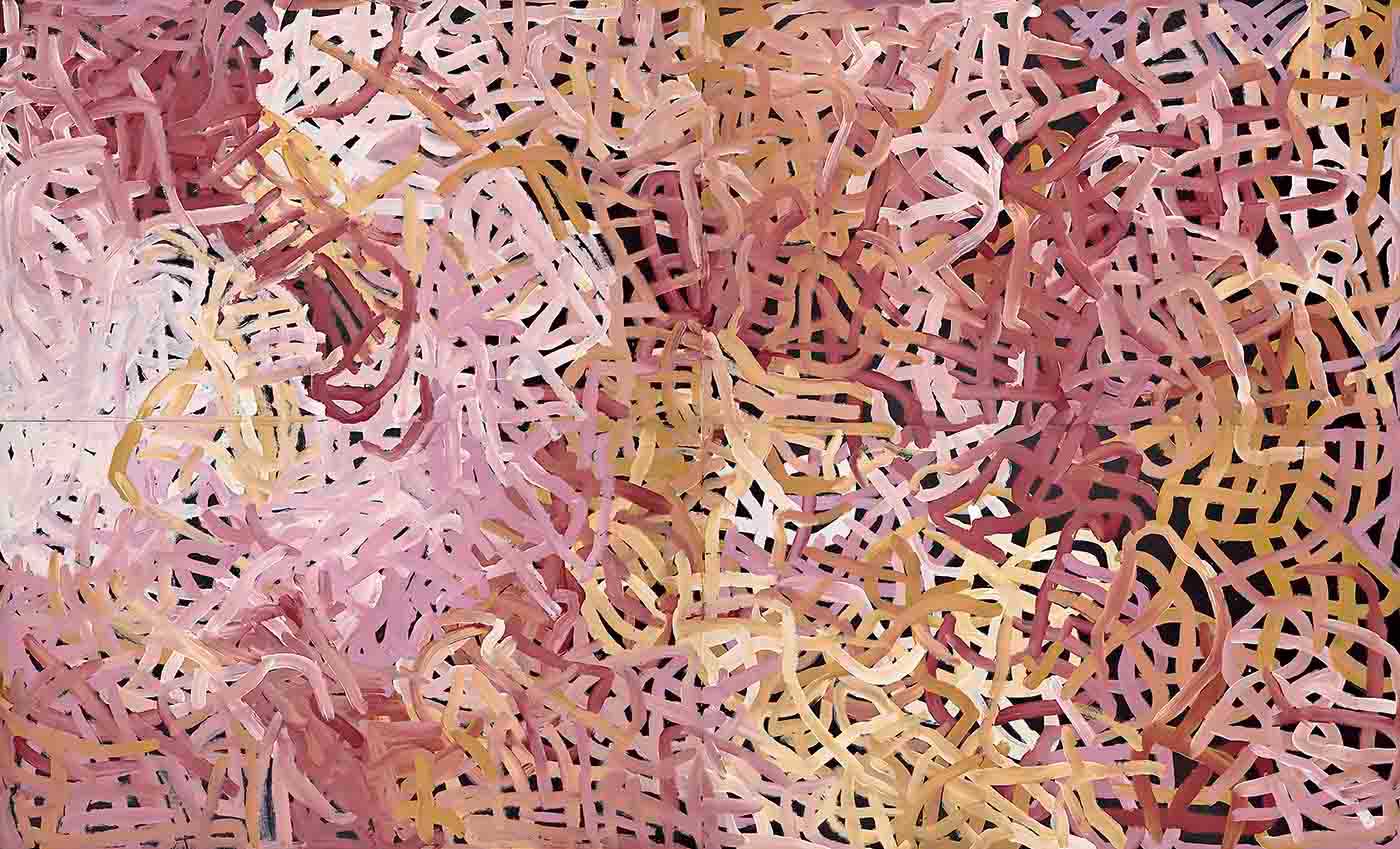Jenny Green, linguist:
Her name itself Kam[e], comes from the seeds and flowers of the pencil yam plant.
Most of the paintings that focus on Emily's major Dreaming were undertaken in 1995. The pencil yam is an edible tuber that grows beneath the ground and is visible above ground as a creeper.
The organic tracery of interconnecting lines seen in the masterpiece Big Yam Dreaming bears a resemblance to the crazed pattern of cracked earth on the surface of the ground where the yam vine grows, and mirrors the network of arterial roots reaching deep for water in the dry desert sands.
Although the presence of the yam is evident in the lines that define its roots, these lines also symbolise the ancestral connections that have been passed down through the Dreaming. Lines mesh and weave and refer to a wholeness that recalls the netting work of Japanese artist Yayoi Kusama or Paul Klee's concept of 'taking a line for a walk'.
Big Yam, 1996
Emily's profound identification with Kame, the Yam story, which is also part of her name, expresses itself in this exuberant painting. At one level the curvilinear structures that animate the work evoke the meandering tendrils of the yam that grow on her Country of Alhalkere and her ancestor of the same name – a recurring theme in this exhibition. Yet at another, the painting attests to Emily's mastery of the visual language of abstract expressionism (a movement she had no knowledge of) with its overlapping and layering, depth and sheer scale.
This powerful work was executed in Emily's last year of life yet it reveals a muscularity and energy that belies her age. Like a number of other Aboriginal artists, Emily painted on black rather than the usual white canvases. The black surface replicates the familiar surface of black skin upon which the artists engage in body painting.
